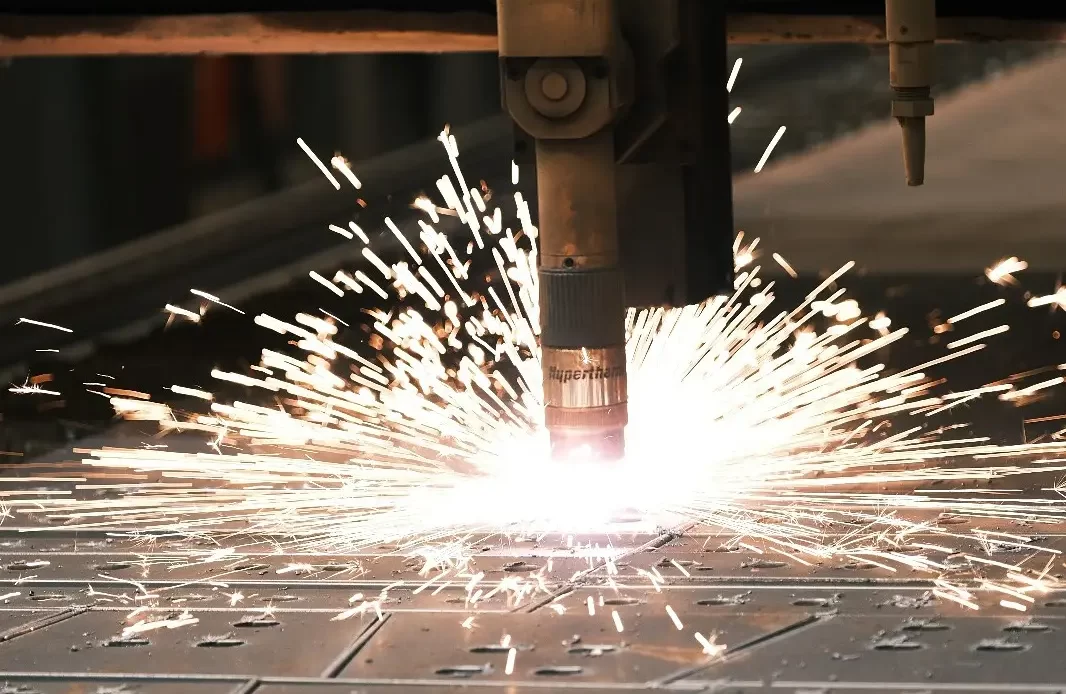
Laser Cutting vs Plasma Cutting: Which One is Right for Your Project?
Choosing the right cutting technology is one of the most critical decisions in any metal fabrication project. The method you select directly impacts precision, speed, cost, and the overall quality of the final product. Two of the most common techniques in modern steel fabrication are laser cutting and plasma cutting. While both methods are highly effective, they serve different purposes depending on the project’s requirements.
In this article, we’ll compare laser cutting and plasma cutting, outline their advantages and limitations, and help you decide which one is best for your application.
What is Laser Cutting?
Laser cutting uses a high-powered laser beam to cut through metals with incredible precision. The process focuses light energy into a tiny area, generating heat that melts or vaporizes the material.
Key advantages of laser cutting:
Exceptional precision – Ideal for projects requiring detailed shapes and tight tolerances.
Smooth edge quality – Cuts are clean, reducing the need for secondary finishing.
Flexibility – Works on thin to moderately thick materials such as stainless steel, carbon steel, and aluminum.
Automation-friendly – Suitable for complex, high-volume production.
Best suited for:
Architectural components, intricate designs, thin to medium-thickness sheets, and industries requiring a flawless finish such as automotive, aerospace, and electronics.
What is Plasma Cutting?
Plasma cutting uses a jet of ionized gas (plasma) at extremely high speeds to cut through metal. It is especially effective for thicker materials where laser cutting may not be as efficient.
Key advantages of plasma cutting:
High speed on thicker metals – Can cut through steel up to several inches thick.
Cost-effective – Lower operating costs compared to laser cutting, especially for heavy-duty jobs.
Versatility – Works well on ferrous and non-ferrous metals, including stainless steel, carbon steel, and aluminum.
Best suited for:
Heavy steel fabrication, construction equipment, industrial structures, and projects where speed and thickness capacity are more important than precision.
Laser Cutting vs Plasma Cutting: Side-by-Side Comparison
| Factor | Laser Cutting | Plasma Cutting |
|---|
| Precision | Extremely high, ±0.1 mm | Moderate, less precise |
| Material Thickness | Best for thin to medium sheets (up to ~25 mm) | Excels with thicker plates (up to 50+ mm) |
| Cut Quality | Smooth, clean edges (minimal finishing) | Slightly rougher edges (may require finishing) |
| Speed | Fast on thin materials | Faster on thicker materials |
| Cost | Higher equipment & operating costs | More cost-effective for heavy-duty use |
| Applications | Automotive, aerospace, electronics, decorative | Construction, shipbuilding, heavy industry |
Which One Should You Choose?
The right method depends on your project requirements:
- Choose laser cutting if:
- You need high precision and clean edges.
- You are working with thin to medium thickness sheets.
- The project involves detailed shapes or designs.
- Choose plasma cutting if:
- You need to cut thicker materials quickly.
- The budget favors a more cost-effective solution.
- Edge finish is not the top priority, or additional finishing is acceptable.
Laser Cutting for Thick Materials
Traditionally, laser cutting was seen as the best solution for thin to medium sheet metals, while plasma cutting was favored for thicker plates. However, new-generation laser cutting machines have changed this perception.
At Steeling.net, our advanced laser cutting systems can cut steel plates up to 70 mm thick with high precision and speed. This breakthrough means you no longer have to compromise between precision and material thickness.
Why Work With Steeling.net?
At Steeling.net, we provide both laser cutting and plasma cutting services, ensuring that your project receives the most suitable solution. Whether you’re looking for high-precision parts or large-scale heavy-duty steel fabrication, our team delivers reliable, efficient, and cost-effective results.
We also offer complementary services such as:
By integrating these capabilities, we can manage every step of your project—from design to delivery.
Advantages of high-power laser cutting at Steeling.net:
- Thicker capacity: Cuts up to 70 mm steel plates.
- Unmatched precision: Smooth edges and minimal need for secondary finishing, even on thicker materials.
- Faster turnaround: High cutting speed reduces production time.
- Cost-efficiency: In many cases, high-power laser cutting eliminates the need for plasma cutting when both thickness and accuracy are required.
This makes laser cutting not only suitable for thin and medium sheets but also for heavy-duty applications where both thickness and flawless finish are essential.
Final Thoughts
Laser cutting and plasma cutting are both essential technologies in the world of metal fabrication. The choice depends largely on the balance between precision, thickness, and cost. By partnering with an experienced provider like Steeling.net, you can be confident that the right method will be chosen to match your unique project requirements.
👉 Need expert advice for your next steel project? Contact us today to discuss the best cutting solution for your needs.